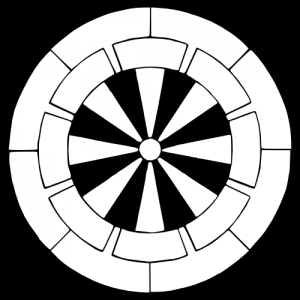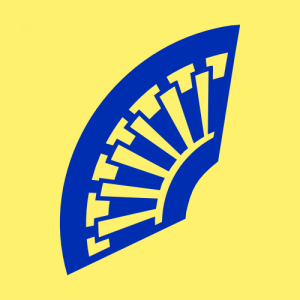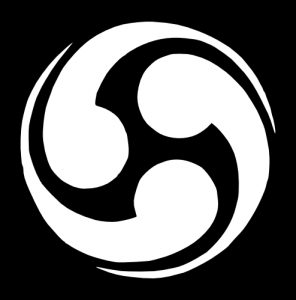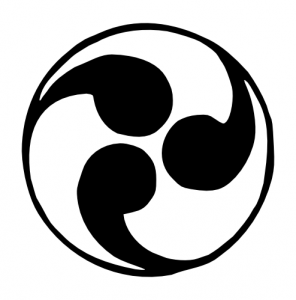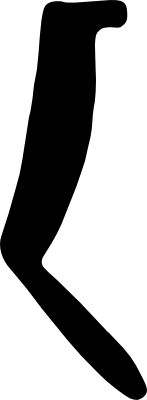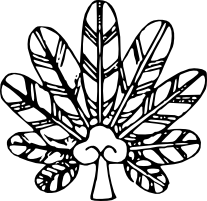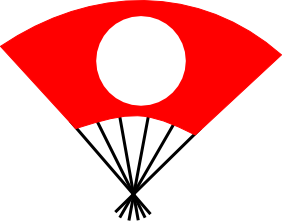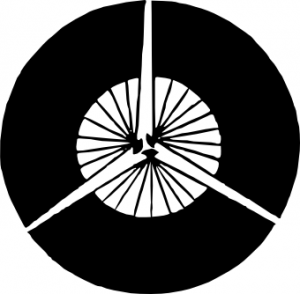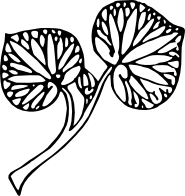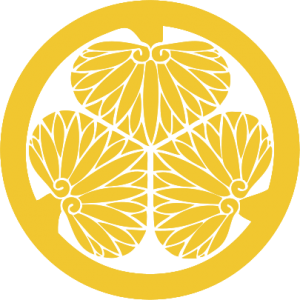Recreational research into Feudal Japan
Auspicious Days, a dissenting view
Aug 4th (a Daian (大安))
A while back I talked about auspicious days and directions. I recently came upon a counterpoint reflecting the practical aspects of military thought. This is one of the seventeen testaments of Asakura Toshikage, one of the first Sengoku daimyō, the great lords of the Warring States period.(SoJT:429)
It is extremely regrettable if a commander, when fighting a battle that can be won or laying siege to a castle that can be taken, should change his time schedule after choosing an auspicious day and considering which directions are good and which are bad. But if a commander, disregarding auspicious days and favorable directions, assesses in detail the realities of the military situation, lays detailed plans for attacking, responds flexibly to circumstances as they present themselves, and maintains his basic strategy, he is sure to be victorious.
As I’m off to Pennsic War this week, I’ll be sure to follow this advice and completely ignore auspicious days while there. Now, back to packing.
Period Award Scrolls
Jul 9th (a Tomobiki (友引))
Just a quick one this week, since I’m off to the war. I was looking through translated excerpts of the Nihon Shoki(SoTJ:48), and I came across some imperial edicts very similar in style to the award scrolls used in the modern Society for Creative Anachronism. Since the Nihon Shoki, as an early Nara period work, is written in Classical Chinese, I’m not going to even consider trying to put together a parallel translation. These edicts are attributed to the Empress Shōtoku.
Notable in this edict are the focus on family merit over individual merit, reflecting the clan-oriented nature of Japanese society, and the focus on both religion and on engineering.(SoTJ:48)
It being my desire to encourage the Inner Doctrines, I was about to erect a Buddhist temple, and for this purpose sought for relics. Then thy grandfather, Shiba Tattō, offered me relics. Moreover, there were no monks or nuns in the land. Thereupon thy father, Tasuna, for the sake of the Emperor Tachibana no Toyohi, took priestly orders and reverenced the Buddhist law. Also thine aunt Shimame was the first to leave her home and, becoming the forerunner of all nuns, to practice the religion of Shākya. Now we desired to make a sixteen-foot Buddha and, to that end, sought for a good image of Buddha. Though didst provide a model which met our wishes. Moreover, when the image of Buddha was completed, it could not be brought into the hall, and none of the workmen could suggest a plan for doing so. They were, therefore, on the point of breaking down the doorway when thou didst manage to admit it without breaking down the doorway. For all these services of thine, we grant thee the rank of Dainin, and we also bestow on the twenty chō of paddy fields in the district of Sakata in the province of Afumi,
This next one has more political subtext, and also shows how much those who notionally retired from political life to become monks or nuns could retain political influence.(SoTJ:119)
It has been represented to us, in view of the master’s constant attendance on us, that he has ambitions of rising to high office like his ancestors before him, and we have been petitioned to dismiss him from our court. However, We have observed his conduct and found it to be immaculate. Out of a desire to transmit and promote Buddha’s Law, he has extended to us his guidance and protection. How could we lightly dismiss such a teacher?
Although our head has been shaven and we wear Buddhist robes, we feel obliged to conduct the government of the nation. As Buddha declared in the Sūtra, “Kings ye who take up thrones, receive the ordination of the bodhisattvas!” These words prove that there can be no objection even for one who has taken holy orders in administering the government. We deem it proper therefore, since the reigning monarch is ordained, that the chief minister should also be an ordained monk. Hearken, all ye people, to our words: We confer on the Master Dōkyō the title of chief minister and master, though the title is not of his seeking.
And with that, I’m off. Mata raishū!
Mon of the Week: Natagama
Jul 4th (a Sembu (先負))
Here we have an interesting mon. Unlike many of the mon we’ve discussed recently, this mon has died out, and is no longer in use. In fact, finding information about this mon at all is quite challenging! It was used by Ōno Harufusa in the Battle of Ōsaka.(SH:62) What do you think it is?
My initial source for this mon, Stephen Turnbull’s Samurai Heraldry, describes this mon as a ‘hatchet’. But it doesn’t look like any hatchet I’ve ever seen. Perhaps this was some sort of traditional Japanese hatchet? Looking into it, however, it seems that Japanese hatchets are pretty similar to Western ones. What then?
After an extensive search, I found the mon in a Japanese collection of Sengoku period mon. Here it is identified as a “nata” (鉈).(SSS) This turns out to be a traditional forestry knife similar to a small machete used by woodcutters and for wilderness survival.(ja.wp:鉈) (The same kanji can also be used to mean “hatchet” in compounds, and a nata can be used for splitting wood like a hatchet, to give Turnbull some credit.) What this mon most resembles, however, is not the ordinary nata, but a variation called a “natagama” (鉈鎌) or “billhook”, which, unlike the plain nata, includes the hook at the end. It is mainly suited for cutting brush and branches, but could also be used as a weapon.(en.wp:Billhook)
As to why this mon didn’t catch on? One possibility is that, straddling the line between a weapon and a tool, once mon representing tools became associated with lower classes it was seen as not suitable for a samurai. Of course, the fact that our friend Harufusa seems not to have had any children(ja.wp:大野治房) may also have something to do with it.
Element of the Week: Chestnuts, Rhombi, and Caltrops
Jun 28th (a Sembu (先負))
This week we have a simple element that has some interesting characteristics. Hishi (菱) can be translated as the rhombus/diamond shape, a type of water chestnut, or as a caltrop (the weapon). In mon, it is depicted as a geometrical rhombus. This is the same element used in the logo for the Mitsubishi corporation, which was named for the three (mitsu) diamonds in its crest. Here are two versions of a three stacked (literally, three stories) hishi crest, a version used by Ogasawara Tadazane in the 17th century(SH:63) and a more modern version.(IEJFC:312.13)
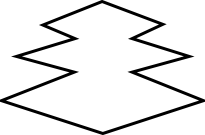 <img src="http://fireflies.xavid.us/wp-content/uploads/2010/06/3diamonds-300×242.png" alt="" title="Three Diamonds" width="300" height="242" class="size-medium wp-image-300" srcset="http://fireflies.xavid.us/wp-content/uploads/2010/06/3diamonds-300×242.png 300w, http://fireflies prendre le viagra.xavid.us/wp-content/uploads/2010/06/3diamonds.png 443w” sizes=”(max-width: 300px) 100vw, 300px” />
<img src="http://fireflies.xavid.us/wp-content/uploads/2010/06/3diamonds-300×242.png" alt="" title="Three Diamonds" width="300" height="242" class="size-medium wp-image-300" srcset="http://fireflies.xavid.us/wp-content/uploads/2010/06/3diamonds-300×242.png 300w, http://fireflies prendre le viagra.xavid.us/wp-content/uploads/2010/06/3diamonds.png 443w” sizes=”(max-width: 300px) 100vw, 300px” />
Three stacked diamonds
This is an example of a highly stylized plant motif, and also, as a caltrop, a military connotation. This particular arrangement also has a similar shape to the character for ‘king’ (王/ō), and thus had auspicious connotations.(ja.wp:小笠原氏)
Motif of the Week: Folding Fans
Jun 14th (a Senshō (先勝))
A while back we talked about one type of fan used in mon, but the type of fan everyone associates with Japan is the standard folding fan. This was a very popular motif in mon through the centuries. Its origins as a design motif date to the Heian period (794–1185).(Dower:110)
Here are two folding fans from our collection of 15th century provincial samurai mon.(KJ:7) The one on the left is a cypress fan, which was part of the traditional court costume, with the number of slats used indicating the status of the holder.(Dower:110) The one on the right is of feathers. It’s stylistically related to the hemp palm mon, and is associated with tengu, the mythical “bird goblins” who would trick mountain travelers with illusions, and from there mountain asceticism and certain temples and shrines.(Dower:111)
A simple folding fan design with the sun-circle motif was used by Satake Yoshinobu at the Battle of Imafuku in 1614, in the early Edo period.(SH:H9,62) This style of papered fan, optionally with design, became the standard version of the folding fan for mon. This particular version is interesting because it breaks the standard two-color rule for mon, which would soon become inviolate, by using three distinct colors: black, white, and red.
Around the same time, we have a three-fan design used by Matsudaira (Okochi) Nobutsua, who we mentioned last week, at the Shimbara Rebellion in 1638.(SH:63) Making circles of fans is similar to the way circles would be made of some plants in mon.
Modern fan mon are very similar to these early Edo designs, but with more realistic handles that hearken back to the earlier fans we have here.(IEJFC:52.2)
Mon of the Week: Ladder
Jun 7th (a Butsumetsu (仏滅))
As time progressed, the daimyō gained power, and the samurai class came into its own in the Sengoku Period, mon became more universally used for identification among samurai, and the variety of mon used increased. While other forms of identification heraldry were used, including a wide variety of giant objects on poles, mon had the advantage that they could be replicated quickly, used on a wide variety of items (banners, curtains, armor, shields, and personal items), and could be varied easily in color1, background, or placement to represent different divisions of an army.(SH:24) Because of the widespread use of mon and the greater number of surviving records, we have evidence, both written and pictorial, for more mon in the Sengoku and Momoyama periods.
Even as the Edo period approached and mon became more stylistically consistent, they still weren’t as uniform as they later became. For example, while the modern image of mon generally has them about as tall as they are wide, today’s mon doesn’t follow that at all. Then again, it makes sense for a ladder to be tall. Ladders made good mon for several reasons: a simple design, ability to vary rung numbers to create variations, and a shape that mirrored the tall banners often used in battle. It may have also had auspicious connotations of rising in the world.(Dower:118) The ladder mon was used by Makino Tadanari (who used 7 and 10-runged ladders) at the Battle of Osaka in 1614–15 and by Matsudaira (Okochi) Nobutsua (who used an 8-runged ladder) in the Shimbara Rebellion in 1638.2 This latter ladder is shown here.
Here is a modern-style, more square version of the ladder mon. While tall ladders are still in use, they often use a more three-dimensional design than earlier ladders.
Mon of the Week: Hollyhock
May 31st (a Sembu (先負))
Continuing our pass through 15th century rural samurai mon,(KJ:7) this week we have a straightforward one. It shows two hollyhock leaves with a bud, arranged representationally.
Unlike the previous few weeks’ mon, this design has been preserved almost unmodified through the centuries; compare this similar modern mon.(IEJFC:8)
One interesting thing about the Japanese used to describe mon is that, while mon descriptions are basically standard Japanese, small changes in the description can be significant. Here, the two leaves are counted as 二葉/futaba, or “two leaves”. Mon counted in this way use representational designs. In later times, geometric designs became more popular; these might be described similarly, but counted with 二つ/futatsu, or “two things”. In essence, the difference is between a “two-leaved hollyhock” and “two hollyhock leaves”. You can see the difference in the Tokugawa mon, which uses the つ/tsu counter.
